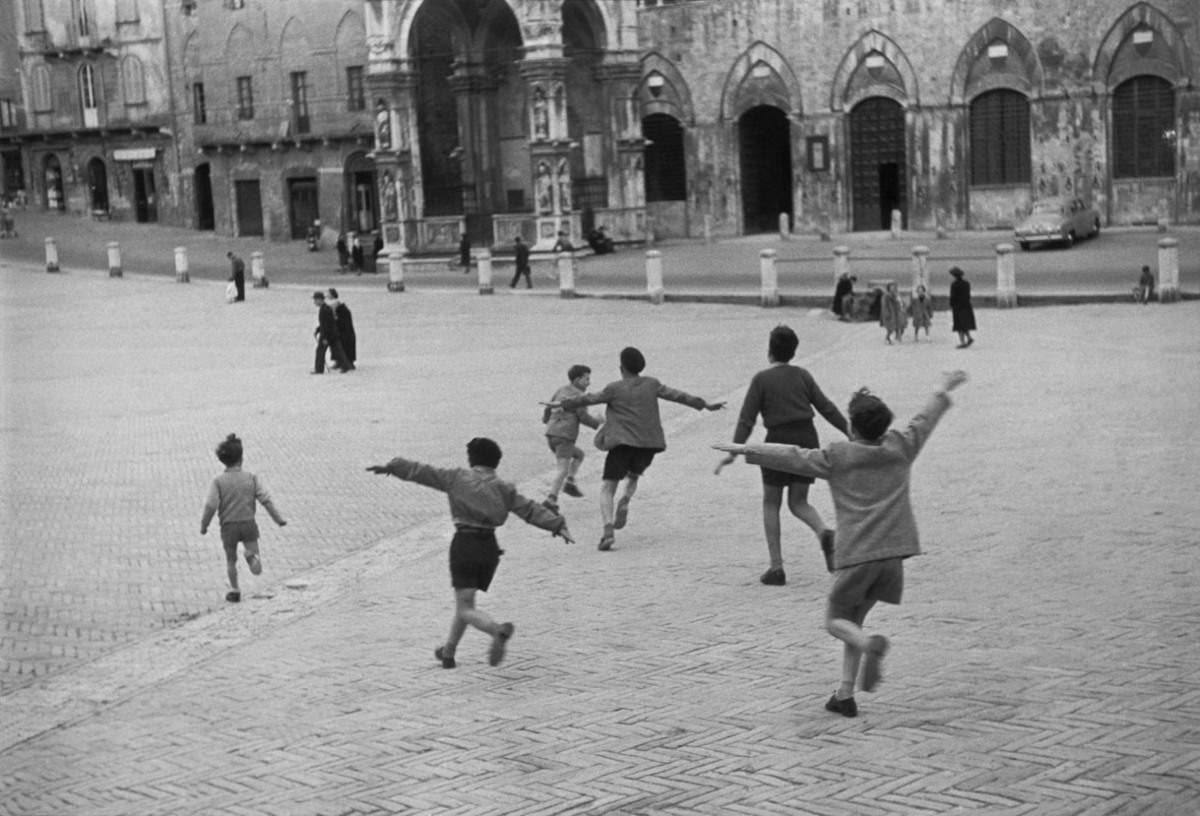Palazzo Roverella in Rovigo dedicates a monographic exhibition to the link between Cartier-Bresson and Italy
From Sept. 28, 2024 to Jan. 26, 2025, Palazzo Roverella in Rovigo will host the monographic exhibition Henri Cartier-Bresson and Italy, curated by Clément Chéroux and Walter Guadagnini, promoted by the Fondazione Cassa di Risparmio di Padova e Rovigo with the Municipality of Rovigo and the Accademia dei Concordi, with the support of Intesa Sanpaolo; the exhibition is organized in collaboration with the Fondation Henri Cartier-Bresson in Paris and the CAMERA Foundation - Italian Center for Photography in Turin.
The exhibition, marked chronologically, is dedicated to the strong bond between the famous photographer and Italy, which for the first time is documented in depth through about 200 photographs and documents, including newspapers, magazines, volumes and letters. The stages of a relationship that began very early, as early as the 1930s, and continued until Cartier-Bresson abandoned photography in the 1970s will be retraced.
The exhibition begins with Henri Cartier-Bresson’s first Italian trip, which took place in the early 1930s, when he was still very young and had just abandoned painting for good to devote himself to photography. In the company of his friend André Pieyre de Mandiargues, a young poet and writer, and his companion, the painter Leonor Fini, Cartier-Bresson took some of his most famous images, all of which are featured in the opening section of the exhibition.
The second trip, equally significant, takes place in the early 1950s and touches on Abruzzo and Lucania, lands of great cultural, sociological and photographic interest. These regions represented the South where tradition and modernity, poverty and social change confronted each other. A central figure in the construction of the image of the South was the writer and painter Carlo Levi, a fundamental reference for many photographers, both Italian and foreign, who moved between Matera and the surrounding towns, such as Scanno near L’Aquila, which became famous thanks to the shots of Cartier-Bresson and, later, Giacomelli. Particularly interesting, also from a historical point of view, are the images of land distribution, a crucial moment in the country’s recent history.
Cartier-Bresson returned to Italy several times between the 1950s and 1960s, producing features for major illustrated magazines of the time, including Holiday and Harper’s Bazaar. He devoted himself mainly to Rome, Naples, Venice, and locations such as Ischia and Sardinia, piquing the interest of foreign readers and capturing the customs and traditions of the country and its inhabitants. The various shots taken in Rome restore the climate of those years and the specificity of a country not yet influenced by the dominant culture from overseas. Some of these images are included in the photographer’s famous book, Les Européens (1955), which chronicles the new Europe in full development after the tragedy of World War II.
The exhibition concludes with images from the early 1970s still dedicated to Matera, marking a return to the places visited 20 years earlier. These shots allow us to read the continuity and discontinuity of time, the advance of modernity and the persistence of local identities. In addition, images devoted to the world of industrial work, between Olivetti and Alfa Romeo, shift the focus to the new ways of life of the period.
The monographic exhibition consists of vintage works from the Fondation Cartier-Bresson and is accompanied by explanatory texts in each room and a catalog, published by Dario Cimorelli Editore, that includes all the works on display, essays by the two curators and by Carmela Biscaglia, the latter dedicated to the events and characters that made Cartier-Bresson’s relationship with Basilicata unique.
For info: www.palazzoroverella.com
Image: Henri Cartier-Bresson, Coronation of John XXIII, Vatican City, 1958 © Henri Cartier-Bresson Foundation / Magnum Photos
 |
| Palazzo Roverella in Rovigo dedicates a monographic exhibition to the link between Cartier-Bresson and Italy |
Warning: the translation into English of the original Italian article was created using automatic tools. We undertake to review all articles, but we do not guarantee the total absence of inaccuracies in the translation due to the program. You can find the original by clicking on the ITA button. If you find any mistake,please contact us.




























